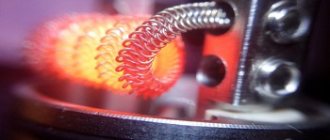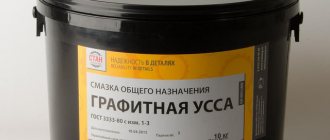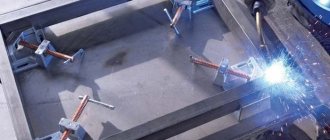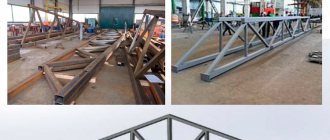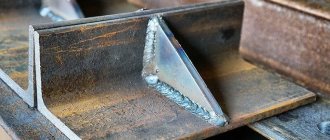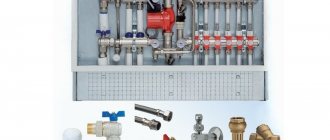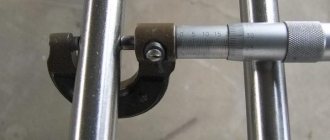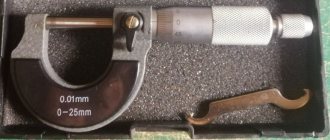It’s hard to imagine the industry without a variety of rubber products. Technical rubber is actively used in various industries and in technology. Rubber products are characterized by particular strength and the ability to achieve the desired properties when combined with other materials. If we are talking about large production, then technical plates are often used to produce parts. The most common raw material is TMKShch technical plates.
Oil and petrol resistant technical plates
MBS technical plates are sheet material made from special grades of rubber compounds, resistant to constant or periodic exposure to environments containing oils, gasoline and other fuels. Available in the form of rectangular plates of specified sizes or in rolls. The document that regulates the production of MBS technical plates is GOST 7338-90. It determines the requirements for the performance properties and dimensions of finished products, and also sets the rules for marking and symbols of different types of material.
Technical characteristics of sheet rubber
As already noted, the main technical parameters of sheet rubber are regulated in GOST 7338-90. By the way, in some documents you can find references to GOST 7339-65, which is no longer valid.
Technical characteristics of sheet rubber
In particular, it determines that the finished product has the following dimensions:
- Sheets width from 250 to 1350, length from 250 to 1000 mm.
- Rolls width range from 250 to 1750, length can reach 10,000 mm.
- The thickness of the technical plate ranges from 1 to 60 mm.
- The specific gravity of the technical plate varies within 1000 g per 1 cubic meter. dm.
The technical characteristics of the vacuum plate are supplemented with the following parameters:
- The dimensions of the technical plates, mostly square in shape, are 500x500, 600x600, 700x700, etc.
- It must remain operational at temperatures from -8 to +70 degrees Celsius.
The vacuum plate is produced in accordance with the requirements of TU 38105116-81. Special transformer materials are also produced in the form of sheets or rolls. It is used in the production of transformers and other devices used in electrical engineering. Technical requirements for it are defined in GOST 12855.
Application area
MBS technical plates are used to make gaskets and seals for various equipment, flooring and coatings for protection against the effects of single mechanical loads, electric current, etc. Such rubber products can be used at temperatures from -40 to +80 ° C with liquid and gaseous media:
- by air;
- nitrogen;
- inert gases;
- methane;
- mineral and synthetic oils;
- gasoline, petroleum-based fuels.
When operating in liquid media for rubber goods made from MBS, the maximum operating pressure is 10 MPa, in gaseous media – 0.4 MPa. Minimum operating pressure 0.05 MPa. Subject to the recommended operating conditions, rubber perfectly retains its performance properties - elasticity, softness, size (does not swell).
Products made from MBS should not be exposed to toluene, benzene and other aromatic hydrocarbons, chlorinated hydrocarbons, acetone, and glycol-based brake fluids.
Types of rubber sheets
The fundamental document for sheet rubber manufacturers is GOST 7338-90. This document applies to rubber plates, which are intended for the production of parts used to seal fixed joints, preventing friction between the surfaces of parts made of metal. In addition, parts made of this type of rubber must withstand shock loads that can occur in machines and mechanisms operating in various industries and construction. The same documents define the types of rubber and the operating conditions for which they are intended. Thus, oil-resistant rubber has three degrees of hardness, and can operate at temperatures from -40 to +90 degrees Celsius. It must remain operational in environments containing fats, oils, emulsions, inert gases and steam.
GOST determines that, depending on the scope of application and operating conditions, three main types of technical sheet rubber are produced.
Oil and petrol resistant sheet rubber
Sheet rubber oil-resistant
Heat-frost-acid-shallow-resistant sheet rubber
- heat-frost-acid-shallow-resistant (TMKShch);
- oil resistant MS;
- oil and petrol resistant MBS.
The TMKShch rubber plate remains operational in environments such as aqueous, acidic, alkaline and gas. It can be used, depending on the degree of hardness, from -45 to +90 degrees Celsius.
Oil-gasoline-resistant (MBR) sheet rubber can operate in oily or in environments in which hydrocarbon fuels are present. The operating temperature range is from -30 to +80 degrees Celsius.
Several other types of rubber are produced in sheet form:
- vacuum;
- silicone;
- spongy.
Sponge sheet technical plate
Silicone rubber sheets Vacuum sheet technical plate
White vacuum rubber brand 7889 is distinguished by the following parameters - it is insensitive to high pressure and temperature, has high elasticity and at the same time it successfully resists compression. Vacuum rubber, in addition to the sheet version, can be supplied to the consumer in the form of sleeves, cords, etc. Vacuum rubber also includes colored vulcanized sheet rubber. By the way, different colors do not carry any meaning. Such rubber is produced solely for aesthetic reasons. Silicone sheet rubber is a material that is produced using high molecular weight substances, which include silicon and some organic substances. In appearance it is indistinguishable from that produced from ordinary rubber. But its chemical formula allows it to work in a temperature range from -50 to +480 degrees Celsius. If the ambient temperature is no more than +100 degrees, then we can say that parts made of this type of rubber will work forever. By the way, working in such extreme conditions for a long time does not affect its operational workshops.
Spongy (porous) rubber is essentially foamed rubber that can be molded into sheets, etc. The industry produces several brands of these products, which differ from each other in density and areas of application. By the way, porous rubber is often used for creativity.
Food grade sheet rubber is produced in accordance with the requirements of GOST 17133-83. Products made from this material are used to make seals that come into contact with food substances. The technical plate can be supplied to the customer in the form of plates of a certain size or in the form of rolls.
Types of MBS technical plates
Shaped (F) and non-shaped (N)
Mold plates are sheets of specified dimensions, square in shape, manufactured in molds. Standard dimensions (length and width) of such plates according to GOST:
- 500 mm;
- 700 mm;
- 720 mm;
- 750 mm;
- 1000 mm.
The thickness of the mold plates varies from 2 to 70 mm.
Non-molded MBS rubber is a material in rolls produced through dies and continuous vulcanizers. The width of the rolls depends on the equipment settings, as a rule, it ranges from 8000 to 14000 mm. The length of the rubber “sheet” in a roll can be different - from 1 m to 10 m or more. It is determined by the ease of storing and moving rolls. The thickness of non-molded rubber varies from 1 to 20 mm.
In a practical sense, in the manufacture of gaskets and seals, the type of rubber does not affect the performance properties. Rolled rubber is more convenient to use for creating extensive flooring and coverings.
Tires 1 and 2 classes
The class of the technical plate determines what pressure and mechanical stress products made from it can withstand. In the case of MBS plates, these are two classes:
- 1 – for sealing equipment components, machines and mechanisms operating under pressure above 0.1 MPa.
- 2 – for sealing units operating under pressure less than 0.1 MPa, as well as for creating decking, coverings, and protective elements against single impact loads and friction.
Class 1 technical plates are produced with a thickness of up to 20 mm, class 2 – up to 60 mm.
Type I and II plates
In addition to the rubber mixture, in the manufacture of technical plates you can use fabrics that give the sheet material additional strength and protect against excessive deformation. Such plates are called rubber-fabric plates. Thus, MBS technical plates are presented in two types:
- I – rubber sheet without fabric inclusion;
- II – rubber-fabric plate – several layers of fabric are included in the thickness of the rubber.
A rubber-fabric technical plate can contain one or several layers of fabric. It all depends on the need and capabilities of the production equipment. But there is also a limitation: each fabric pad requires a layer of rubber at least 2 mm thick.
Hard and soft rubber
MBS rubber can have different degrees of hardness - increased, decreased and medium. The mechanical strength of finished rubber goods, their elasticity, and resistance to tearing depend on hardness. The main indicators are shown in the table:
| Hardness degree | Soft | Medium hard | Solid |
| Elongation at break | 300 % | 250 % | 200 % |
| Conditional tensile strength | 4 MPa | 5 MPa | 6.5 MPa |
Technical rubber sheets from warehouse
On the website linoptim.ru you can buy rubber for industrial use. Technical rubber sheets
of various thicknesses 25mm, 30mm, 40mm, 50mm is used to protect products from frost, friction, aggressive substances, petrochemical products and corrosion. Technical plate is also used to create flooring for industrial facilities and soften mechanical stress. Industrial sheet rubber - buy at low prices from 1900 rubles per piece (thickness 25mm) in the online flooring store in Moscow.
Legend
The symbol for MBS technical plates indicates:
- class – 1 or 2;
- type – shaped (F) or non-shaped (N);
- type – rubber (I) or rubber-fabric (II);
- brand and degree of softness - MBS-M, MBS-T or MBS-S;
- plate thickness in mm;
- GOST according to which the material is manufactured.
Designation examples:
- Plate 2N-I-MBS-T-12 GOST 7338-90 – technical plate made of MBS rubber of increased hardness, non-shaped (rolled), without fabric layers, 12 mm thick.
- Plate 1F-I-MBS-S-3 GOST 7338-90 – technical plate made of MBS rubber of medium hardness, molded, without fabric layers, 3 mm thick.
For rubber-fabric plates, after the degree of hardness, two numbers are indicated: the first indicates the number of fabric layers, the second - the total thickness of the sheet.
Examples:
- Plate 2F-II-MBS-T-4-40 GOST 7338-90 – technical plate made of MBS rubber with fabric gaskets (rubber-fabric), molded, class 2, increased hardness. The sheet is 40 mm thick and contains 4 layers of fabric.
- Plate 2N-II-MBS-S-3-24 GOST 7338-90 – technical rubber-fabric plate MBS made of medium-hard rubber, class 2, non-molded. The sheet thickness is 24 mm, it contains 3 layers of fabric.
Additionally, you can specify the climatic design of the material. By default, technical plates are produced in climatic versions UHL4, T2, T3, OM4. Versions U3.1, UHL4, T2, T3, OM2 are indicated by an additional number in the marking. In this case, the degrees of hardness of the material are written not as M, C, T, but as M1, C1, T1.
Scope of application of sheet rubber
Technical plates produced in accordance with the requirements of GOS 7338-90 have found their application in various industries - mechanical engineering, aviation, machine tools, food, nuclear, etc. Products made from this material are used in the production of products used in healthcare, sports, etc.
Most often, sheet rubber is used for the production of insulating and sealing gaskets. In addition, it is used in shock-absorbing devices, etc.
Physical and operational properties
| Property | Meaning |
| Density | 1.6 g/cm3 |
| Working temperature | -40…+80 °С |
| Oil resistance at 23 °C for 70 hours | no more than 0±5% |
| Tensile strength | not less than 4 MPa |
| Elongation at break | 200 % |
| Compression (22 hours) at 70 °C | 40 |
| Compression (22 hours) at 100 °C | 60 |
| Aging effect when exposed to a temperature of 70 °C for 70 hours: tensile strength | no more than ±30% |
| Aging effect when exposed to a temperature of 70 °C for 70 hours: hardness | no more than ±10 units. |
| Aging effect when exposed to a temperature of 70 °C for 70 hours: lengthening | no more than 50% |
Storage conditions
It is important to pay attention to the storage conditions of technical plates, because the service life of the product in future use depends on this. According to the product passport, certain requirements for its conservation must be observed:
- avoid deformation of the material;
- Avoid exposure to direct sunlight and heat, oil, kerosene and oil-containing products;
- should not be placed near heating devices, as this can lead to drying out and brittleness;
- store the plates indoors at a temperature of +25 in the original packaging or in bulk.
Compliance with these simple conditions will maximize the shelf life of raw materials. At the same time, the service life of technical rubber under the influence of the working environment is 43,800 hours. This period may vary depending on the different characteristics of the rubber sheet.
The features of technical plates of the TMKShch brand and the scope of their application make it possible to verify the uniqueness and multifunctionality of this product. Despite the high level of stability of the product, the specified storage conditions must be observed. If you are interested in purchasing technical rubber, our website offers a wide variety of offers with detailed descriptions. The Littek company offers competitive prices, quality service and fast delivery.
Plate weight
| Thickness, mm | Plate weight 100 x 100 cm, kg | Plate weight 50 x 50 cm, kg | Plate weight 75 x 75 cm, kg |
| 1,0 | 1,25 | 0,3 | 0,7 |
| 1,5 | 1,90 | 0,5 | 1,1 |
| 2,0 | 2,50 | 0,6 | 1,4 |
| 3,0 | 3,75 | 0,9 | 2,1 |
| 4,0 | 5,00 | 1,3 | 2,8 |
| 5,0 | 6,25 | 1,6 | 3,5 |
| 6,0 | 7,50 | 1,9 | 4,2 |
| 8,0 | 10,00 | 2,5 | 5,6 |
| 10,0 | 12,50 | 3,1 | 7,0 |
| 12,0 | 15,00 | 3,8 | 8,4 |
| 15,0 | 18,75 | 4,7 | 10,5 |
| 20,0 | 25,00 | 6,3 | 14,1 |
| 25,0 | 31,25 | 7,8 | 17,6 |
| 30,0 | 37,50 | 9,4 | 21,1 |
| 40,0 | 50,00 | 12,5 | 28,1 |
| 50,0 | 62,50 | 15,6 | 35,2 |
*Weight is for reference only. Exact values may vary for different brands of tires.
Marking
Let's look at a specific example of marking - 2N-II-TMKShch-S-3. Here the numbers and letters indicate the following rubber properties:
- 2 - second class pressure indicator;
- N - roll;
- II - reinforced with a fabric layer;
- TMKShch - heat-frost-acid-alkali-resistant grades;
- C - medium hardness;
- 3 - thickness 3 mm.
Accordingly, if you see the abbreviation 1N-II-TMKShch-S2, then the pressure indicator is first class, and the thickness of the product is 2 mm. This cheat sheet will help you easily understand any type of rubber.
Food rubber type 3 10x700x700 mm (light) GOST 17133-83
Our online store offers several delivery options:
- courier;
- pickup from the store;
- parcel lockers;
- post office.
Courier delivery*
You can order delivery of goods using a courier, who will arrive at the specified address on weekdays and Saturdays from 9.00 to 19.00. The courier service, after the goods arrive at the warehouse, will contact you and offer to choose a convenient delivery time. Will clarify the address.
You open the package in front of the courier, inspect it for integrity and compliance with the specified package. When it comes to clothing, fitting is acceptable. Inspection and fitting time is limited to 15 minutes. Afterwards you can refuse partially or completely from the purchase.
Delivery is free for orders over 3,000 rubles.
*Check with the store manager to see if there is a courier service in your city.
Pickup from the store
You can pick up the goods at one of the stores that cooperate with us. A list of retail outlets that accept orders from our company will appear in your cart. When the order arrives in your city, you will receive a notification. You just go to this store, contact the employee in the checkout area and give your order number. Your friend or relative who knows the number and name of whom it is registered can pick up your purchase.
Postamat
A parcel locker is a terminal with an automated system for storing ordered goods. The convenience is that a person can pick up an order at any convenient time.
How to work with a parcel locker:
- at the time of placing an order on the website, you choose a parcel terminal that is convenient for you, if such a system operates in your city;
- A unique code will be sent to your phone or e-mail, this means that the goods have been delivered to the parcel terminal;
- you come to the parcel terminal, enter the received code and follow the instructions of the machine;
- pay for your order at the parcel terminal;
- pick up the goods.
The shelf life in the parcel locker is 3 days, but can be extended for a similar period. To clarify the information and extend the storage time, go to our partner’s website, enter your order number and phone number and follow the prompts on the website.
Postal delivery
If there is no courier service or parcel terminals in your city, then you can order delivery through Russian Post. Immediately upon arrival of the goods, a parcel notification will be sent to your address.
Before payment, you can evaluate the condition of the box (without opening): weight, integrity. If you think that the order does not meet the parameters or the box is damaged, ask the postal employee to draw up an opening report. You can open the box yourself only after you have paid for the order.
One order can contain no more than 10 items and its cost should not exceed 100 thousand rubles.
